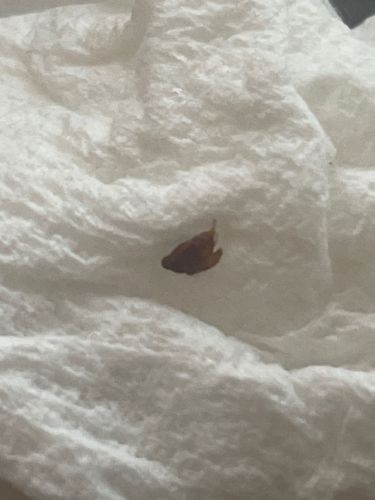German Cockroach (nymph)
Scientific Name: Blattella germanica
Order & Family: Blattodea, Ectobiidae
Size: Nymphs vary in size from about 1.5 mm (first instar) up to 10-12 mm (late instar) before reaching adult size of 11-15 mm.

Natural Habitat
Prefer warm, humid environments, commonly found indoors in kitchens, bathrooms, and other areas where food and moisture are readily available. They hide in cracks, crevices, behind appliances, and under sinks during the day.
Diet & Feeding
Omnivorous scavengers, feeding on almost anything organic, including food scraps, crumbs, grease, paper, glue, and even soap. They are particularly attracted to starches, sugars, and fatty foods.
Behavior Patterns
Cockroaches are primarily nocturnal and gregarious. They can run very quickly and will scatter when disturbed. They communicate through chemical signals (pheromones) and tactile interactions. Reproduction involves oothecae (egg cases) which are carried by the female or deposited in a hidden location. They undergo incomplete metamorphosis.
Risks & Benefits
Risks: Can spread bacteria (E. coli, Salmonella) and pathogens, contaminate food, trigger allergies and asthma in sensitive individuals due to their droppings, saliva, and cast skins. Benefits: In nature, they are detritivores, breaking down organic matter, but their presence indoors is overwhelmingly negative for humans.
Identified on: 8/29/2025